 • In what ways does your media product use, develop or challenge forms and conventions of real media products?
• In what ways does your media product use, develop or challenge forms and conventions of real media products? I wanted to follow the conventions of film in order to keep my 2 minute movie opening as realistic as possible. Before even setting out to the task, I did a lot of research in order to see what the codes and conventions are for classic horror films. I watched a lot of horror movies to help me get some more ides of how I would produce a similar product.
In most horror movies, somebody usually gets killed, or injured, and typically, this character is nearly always a young naive looking girl. The story then unfolds as people proceed to understand more about the killing and try and find out who is responsible for it.
By adding the basic ingredients for a horror movie such as scary music, fast editing and special effects in order to make it look scarier, I think my film was quite successful, taking into account that this is only my second media project.
Now ready to begin filming, we took shots in places in which were similar to those of which are in actual horror movies.
We took a clip from the beginning of a movie, which indicated the company which distributed the film.
After this, I realised that because of the plot of our storyline, I would have to find a way to define different times. By looking at the Texas Chainsaw Massacre, they use black and white film to represent an earlier time, and color shots for present day time.
Texas Chainsaw Massacre:
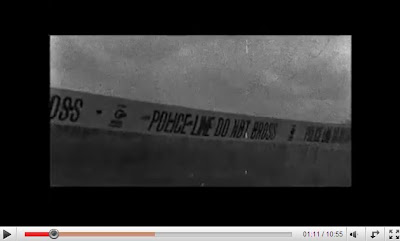
My Film:
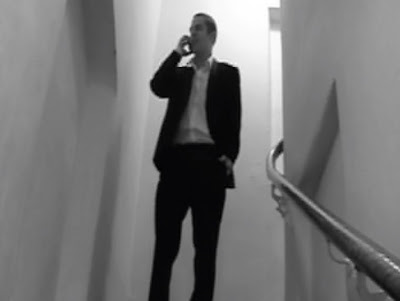
I like this shot as it is a high angle shot of our main male character and it also shows that it is set in the past because of the black and white edit for the clip. This was inspired by an idea from the Grudge:
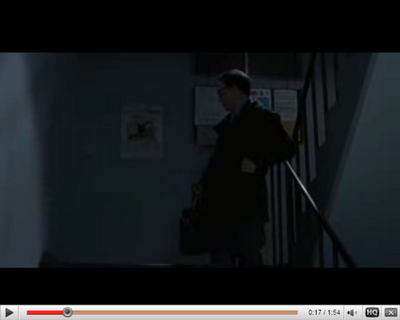
I wanted my movie to be very gripping and immediately strike the audience as interesting and possibly put them out of their comfort zone. I added in credits for the producer and actors etc, which is legit for a movie opening. This is a way keeps it interesting in my opinion. I also managed to use a non-linear storyboard by integrating two stories which play as cross cuts over one another.
• How does your media product represent particular social groups?
During the making of my media project, obviously there were many different things I had to take into account. My chosen genre was initially horror, and the classic horror movies have a naive teenage girl who is in some sort of trouble, which usually involves life threatening situations.
To represent her age was quite difficult as I only added 2 characters in my 2 minute opening, and I had to find some other way of representing her age with as little dialogue as possible. I thought the opening would be much more effective if there was no visible dialogue and if I felt the need to insert speech, it would be done in a voice-over.
By using different costumes to represent the characters ages, I think this was quite effective and it was a bit easier to define their age group.
For the girl, I dressed her in a black dress for the flashback killing scene to represent the darker side of her and make her seem angry. For her second scene, the running scene, I really wanted the audience to see a different side to the character and did this by making her wear white and neutral colours to show a softer side, more naive.
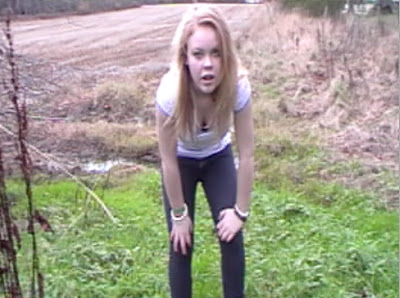
To add more innocence to the young female character, I created the voice over speech in a way that would make her seem like she is scared to add a sense of vulnerability.
By using fast editing in between all of her shots, for example her running scenes, it adds a feel of urgency which makes it seem scarier.
For the male character, by dressing him in a suit made him seem like a controlling person, and this is exactly what I wanted. He had to have something about him that made him creepy and also this was to show a reason for the girl killing him in the first place.
When the male character speaks, I had to make sure that his voice and physical actions represented the kind of character I had wanted him to be which was controlling and dark.
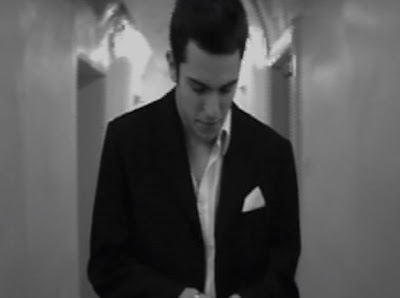
• What kind of media institution might distribute your media product and why?
By considering that the genre of our movie is Horror, I tried to think of media institutions that associate with this kind of movie. I then looked up on the Internet lots of very famous scary movies and continued my research as to which companies distributed those kinds of movies. This is my example of which movies may be interested in distributing our movie.
Dreamworks – The Ring
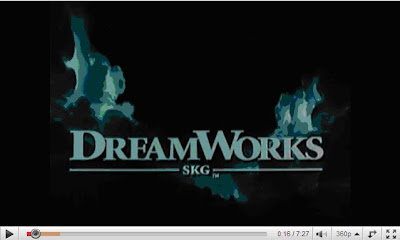
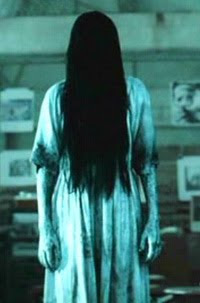
New Line Cinema - The Texas Chainsaw Massacre (2003), Nightmare on Elm Street
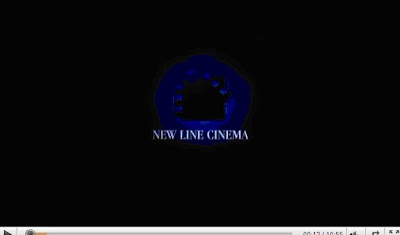
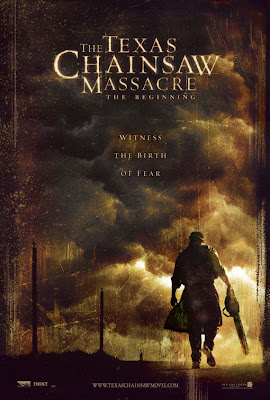
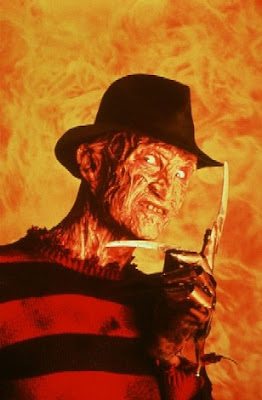
Warner Bros – The Shining
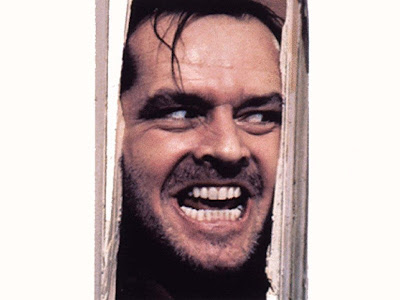
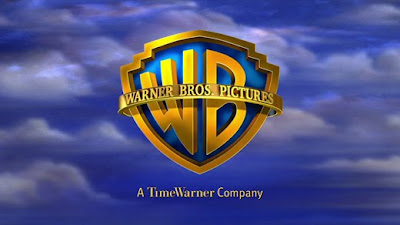
• Who would be the audience for your media product?
Teenagers and young adults would probably be our initial audience because this ages group are the most likely to watch a scary movie. I figured that the best way to find out who would prefer to watch a movie in my genre would be to ask people of different ages and get a average age. I also found out the main reasons why people would choose a scary movie to watch over another genre. They think that scary movies give you a good rush by putting you out of your comfort zone, and making you think a lot. By making the audience feel uncomfortable it entices the audience to keep watching to see how the movie will end.
I did a small study to see which kind of people enjoy horror films and why. Out of 20 people, the majority of people that enjoy scary movies are between 15-26. Reasons for watching scary movies? The viewers explained that they like the thrill of watching a movie that makes them feel uncomfortable and scared. They would prefer to be put out of their comfort zone voluntarily as a change from regular movies as watching a scary movie is almost a different experience to watching films.
They also said that even though they knew that something bad was going to happen in the plot, they still wanted to watch it so that they could see how it ended and if it was a good ending.
It was also a good idea to combine different genres into my film, in order to keep it interesting and to attract people from a wider audience. For example, I think my movie could easily come under genres of ‘teen’ and also ‘horror’, so people who enjoy these genres of movie, would want to watch this one.
• How did you attract/address your audience?
By using some interesting music to accompany our film, we thought this would help build suspense in our story which hopefully would attract audiences who were interested in knowing the continuation of the story. We also used as many different shots as we could and varied our angles too, again to stop our film being boring.
We addressed our audience as if they weren’t there and focused on the action in our storyboard instead of audience interaction. We wanted to cause a feeling of suspense more than anything so we looked at things that added to this, e.g. sound effects, music, gripping story.
In order to attract our intended audience, I had to make sure that the genre ticked all of the typical boxes that genres like teen and horror usually have within their storyline. I added a little romantic and more personal character problem and also added a murder scene which intrigues the audience immediately.
By being inspired by other horror movies, to get good ideas for shot angles and shot types, I found that these made the editing and filming seem much more aesthetically pleasing for the audience.
To address the audience, I decided that instead of doing regular speech in acted out scenes, I would use voice over’s to help tell the story. I thought this would be more effective and in a way, slightly more personal. Plus I thought it was a bit more original and more interesting for the audience. Also by using captions to explain to the audience who the characters were played by, lets them know who they are.
• What have you learnt about technologies from the process of constructing this product?
Whilst the process of making this film was taking place, I learnt many things related to film making, media and also some things to do with HTML’s. Also, by being forced to re-shoot some of our footage I realised how much physical work has to go into it, after having to re-edit in all of the new clips and getting rid of the old ones.
By constantly using search engines to do research like Google and YouTube I learnt found pictures and also trailers. From this I learnt how to post links and also how embed videos.


I also found out how upload videos too, but I prefer to embed clips because it is a lot quicker. You embed a clip for example from the source YouTube, and paste the embed HTML link into the blog post and the video appears on the blog and is played initially through another source.
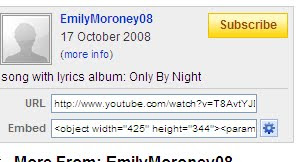
Whilst editing my film I used the program Premiere Elements. This took a while to get used to at the beginning, as I was just learning about how to use the different tools and different ways to edit my clips. In order to create a file small enough to upload onto my blog, I had to export the film from it’s original format into a WMV file. This was to reduce the size of the file by making a slightly less high quality film, but small enough to upload my final film up to the blog. This format of the clip was just a new file and I still kept the original format.
By backing up my clip onto a flash disk to back up our information in case the computer crashed, which I learnt the hard way when my monitor froze and I had to restart it but the files didn’t save. I did not enjoy re-doing my coursework and re-editing everything.
• Looking back at your preliminary task, what do you feel you have learnt in the progression from it to the full product?
To begin the subject of media studies, the class got told that they would have to do a preliminary task, in order to have a go at using the media equipment before we actually started our coursework piece. Our task was to create a mini-story of a person opening a door, entering a room, having a short conversation and then leaving the room.
Since I began my preliminary task, way back at the beginning of the year, I think I have learnt a lot about how films should be produced and filmed, and this helped hugely in the production and editing of my own film. I learnt from the initial mistakes my group made from the preliminary task and by working harder together as a group I think the project has ended up quite well.
By learning to plan ahead and schedule when to do what tasks and who should do them, it kept the group on task and efficient. Although there were some problems at one point throughout the journey, the clip did come together in the end. The re-filming part was quite annoying as it was a couple of months after the initial filming that we had previously done, and obviously physical appearances had changed, but I think we managed to make it work and not look too bad
.
I learnt that in order to make the product better, I would have to listen to a lot of constructive criticism from peers and teachers. This was extremely aggravating at times as it had felt that I had just finished a task and would actually have to re-start it all over again.
When I finally handed in the final film, it was the best feeling ever, just to have it out of the way. The positive feedback I eventually got was very encouraging and I have very much enjoyed this project.
Comparing my coursework piece and my preliminary task, I think the quality of my filming and editing has improved immensely. I have become more confident with the equipment and have had a lot more practice and more ideas on the subject of film-making.
• How did the feedback you received help you make a better film opening?
From many different people, at lots of different stages of the making of my movie, I received a lot of constructive criticism in order to improve the quality of my movie opening.
For example, on the first publication on the blog of my final piece, there were comments to help me change the shots that didn't quite fit correctly.
* SHAmedia Productions said...
I think it's very well done! The only thing that I would change is the bit where Kim is running across the field, it looks weird because you had to speed it up. But everything else is very good. Good work!
2 February 2010 01:17
This particular comment helped me change the running scene where the foot shot looked a bit unrealistic because it had been sped up. Instead I cut this clip out, and added a little more dialogue at the beginning to help explain the story and not have unnecessary shots.
* Gabi + James + Simon said...
I really enjoyed the beginning of your film so far and I think the concept is really well done. Here's a list of the few things I noticed that could be changed or improved:- 00:26 - The actor looks as though she is running unnaturally fast, is this deliberate?- When the titles appear on screen all of the sound disappears, maybe it should fade out or continue.- 00:57 - The phone needs a ring tone.- 01:35 - The shot of the actor breathing should go on for a little longer as I think it flashes up too quickly.Well Done,
Gabi Paterson
26 January 2010 01:40
This comment was extremely helpful as Gabi managed to break down the parts which didn't look very good and give me the correct times in the movie so that I could edit them accordingly.
Again, there was a comment about the running scene, so this reinforced the previous feedback I had got on it and I was then definately sure it would need to be changed. I also had the chance to use the music a different way by adding two different songs. I was unaware previously of the sound disappearing whilst the credits appear on the screen. This was helpful as I would of probably just overlooked this.
However, the phone shot was deliberately quiet as it is supposed to represent the character ignoring the male figure on purpose. I don't know if this comes across but this was the general idea.
Looking back to the preliminary, the feedback that I recieved then really helped me to develop my major task movie opening. To begin with, the preliminary task was a lot more difficult as I was less experienced, but with all of the constructive comments I recieved, it was much easier for me to improve my film opening so that it would turn out better than the preliminary task.
Comments I recieved for the video of the preliminary task:
* Kim & Jenny said...
Jenny wrote: Just after vidur has sat down, the lighting in the room changes which is a continuity error because it does not look like the footage was filmed on the same day.
5 November 2009 03:59
* SHAmedia Productions said...
The preliminary task is good, the only thing that wasn't good was that the camera was wobbling sometimes and it was a bit dark when Vidur looked through window. But apart from those little mistakes the task has been well done.Henri
5 November 2009 04:12
* Gabi + James + Simon said...
It was good and especially the part at the beginning with the music. When you filmed the parts with the close ups of the characters the camera started to shake and in parts the lighting was different but apart from that it was good with a wide range of camera angles.James
5 November 2009 14:38
These were quite easy to get on board with as they were simple things in which I learnt more about how to control in the making a process of the major task. I was a lot more careful when it came to lighting, which may seem very simple but it has to be precise and you have to make sure that even during a shot-reaction-shot clip, the lighting must be the same otherwise it doesn't look like it is a conversation. This was a continuity error, which I don't think I had a problem with in the major task.
Another problem I had was the walking shot at the beginning. It was an extremely shaky shot and it looked very careless. In my final task there was one free-hand shot where I couldn't use the tri-pod as it was a moving shot. I think that it was a much better shot and was very smooth however in comparison to the first time I tried it. It took a lot more takes to get it right, but I think it was definately worth it as the shot is a good one.
Also, to keep the camera still during the other shots I took, a tri-pod was my new best friend and helped me get still shots which were effective and interesting.

No comments:
Post a Comment